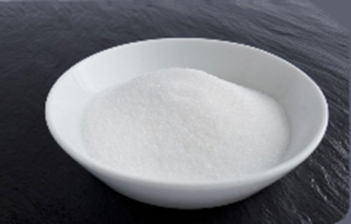Sodium Tripolyphosphate: A Key Ingredient for Detergents and More
Sodium tripolyphosphate (STPP) is a widely used compound in various industries, especially in detergents and as a food additive. In this article, you’ll learn about the versatile uses of STPP, its benefits, and why it remains a top choice in many manufacturing processes. Whether you’re part of the food industry or searching for a powerful detergent ingredient, this guide will cover all the important details about STPP.
1. What is Sodium Tripolyphosphate (STPP)?
Sodium tripolyphosphate (STPP) is the sodium salt of triphosphoric acid, with the chemical formula Na5P3O10. It appears as a white, water-soluble substance used in cleaning products and food preservation. One of its essential characteristics is its ability to sequester calcium and magnesium ions, which otherwise interfere with detergent effectiveness.
STPP finds application in various industries due to its versatility. Its structure and properties help improve performance in different products, making it a crucial ingredient across multiple sectors.
2. Why Is STPP Important in Detergent Formulations?
STPP significantly enhances detergent performance. Acting as a powerful sequestrant, it binds with metal ions like calcium and magnesium, which are common in hard water. By neutralizing these ions, STPP prevents them from forming insoluble salts that could reduce cleaning efficiency. As a result, detergents with STPP clean effectively, even in hard water.
Additionally, STPP stabilizes detergent formulas, ensuring they remain effective over time. This feature makes it indispensable in both powdered and liquid detergents. Moreover, STPP prevents lime scale formation, balances pH, and helps suspend dirt particles for easier removal. These advantages make STPP the preferred choice for high-performance detergents.
3. Understanding the Solubility of STPP
The solubility of STPP plays a crucial role in its effectiveness. In detergents, STPP dissolves quickly, regardless of water temperature, ensuring cleaning agents activate swiftly. This property enhances detergent performance, especially in regions where water hardness varies.
Several factors influence the solubility of STPP, including temperature and pH. Warmer water increases its solubility, making it more effective in hot washes. However, even in cold water, STPP maintains adequate solubility, ensuring good results for cold-water detergents. This adaptability allows manufacturers to create versatile cleaning products.
Outside of detergents, STPP’s solubility benefits industrial water treatment. Its ability to dissolve quickly helps soften water by precipitating hardness ions, which is vital for maintaining equipment efficiency in industrial processes like boiler feed water preparation.
4. The Use of STPP as a Food Additive
In the food industry, STPP is a multi-functional additive. It is commonly used in processed meats, poultry, and seafood to improve texture and retain moisture. By preventing water loss during cooking, STPP ensures that these products remain juicy and appealing, making it especially valuable for frozen foods, where maintaining moisture during thawing is critical.
STPP also plays a role in controlling the flavor and appearance of food. It helps regulate acidity, making it a key ingredient in processed cheeses, baked goods, and even beverages. By stabilizing texture and preventing spoilage, STPP extends the shelf life of many food items. It also prevents crystallization, preserving the quality of frozen or canned products.
Despite some concerns, STPP remains approved for use within regulated limits. Regulatory bodies, such as the FDA, classify STPP as generally recognized as safe (GRAS) when used according to regulations. This makes STPP a reliable choice for manufacturers who prioritize both safety and product quality.
5. Water Treatment Applications of Sodium Tripolyphosphate
STPP is widely used in water treatment systems for its ability to soften hard water. By binding calcium and magnesium ions, it prevents the formation of scale in pipes and machinery, which could lead to blockages and inefficiencies. This makes STPP essential in industries like textiles, manufacturing, and paper production, where water quality is critical to operational efficiency.
In addition to softening water, STPP helps disperse particles, preventing sediment build-up. This is especially beneficial in large industrial plants where impurities can damage equipment or reduce production efficiency. STPP also prevents scaling and corrosion in boilers and heat exchangers, making it a versatile water treatment solution.
In municipal water treatment, STPP keeps water systems free from scale and mineral deposits, reducing the need for frequent maintenance. Its cost-effectiveness and reliable performance make it a staple in both industrial and municipal water treatment processes.
6. Detergent Formulations with STPP: A Detailed Breakdown
In powdered detergents, STPP enhances the flow of ingredients and prevents clumping. This ensures that the detergent remains easy to use and store. Its sequestration properties neutralize hard water ions, allowing surfactants to work effectively, regardless of water conditions.
In liquid detergents, STPP stabilizes the formula, preventing separation over time. It acts as a buffering agent, helping the detergent maintain its pH level while enhancing stain removal. STPP also prevents soil redeposition by keeping dirt particles suspended, ensuring they wash away completely.
In both types of detergent, STPP improves solubility, allowing for quick dissolution in water. This is particularly important for eco-friendly detergents designed for cold-water washing. STPP’s ability to work across various water conditions ensures consistent cleaning performance, making it a trusted ingredient for detergent manufacturers.
7. Carbonate vs. STPP in Detergent Efficiency
Carbonate and STPP serve different purposes in detergents, but STPP often delivers better results. Carbonate compounds like sodium carbonate soften water by precipitating calcium and magnesium. However, this process can leave residue on fabrics or washing machines, which reduces efficiency and requires more maintenance.
STPP, on the other hand, sequesters these ions without leaving residue. It forms soluble complexes with calcium and magnesium, preventing them from interfering with the cleaning process. This ensures that STPP-based detergents clean effectively, especially in hard water. Additionally, STPP disperses dirt particles better, keeping them suspended in water for easier removal.
While carbonates are often cheaper, STPP’s superior cleaning performance and reduced maintenance costs make it the preferred choice for premium detergents.
8. STPP’s Role in Ceramics and Industrial Applications
STPP also plays a key role in ceramics manufacturing. It acts as a deflocculant, helping disperse clay particles during the slip casting process. This reduces viscosity, making the clay easier to shape. STPP also stabilizes ceramic glazes, ensuring even application and preventing defects during firing.
In industrial applications, STPP is used as a dispersant in water treatment and other processes. It binds metal ions, preventing scale formation in equipment like boilers and heat exchangers. STPP’s ability to improve water quality and protect equipment makes it a vital component in industries like metal cleaning, textiles, and paper production.
Its versatility extends beyond household products, proving its value in large-scale industrial settings where performance and cost-efficiency matter most.
9. Sodium Tripolyphosphate and Environmental Considerations
STPP’s environmental impact has raised concerns, especially due to its role in water pollution. When STPP enters water systems, it can contribute to eutrophication. This process causes excess nutrients to promote algae growth, leading to oxygen depletion and harming aquatic life.
In response, many countries have imposed restrictions on phosphate use in detergents. Some manufacturers have shifted to phosphate-free alternatives, like zeolites or citrates. These alternatives are more environmentally friendly, though they may not clean as effectively as STPP in hard water.
Industries using STPP are working to reduce its environmental impact through better wastewater treatment and efforts to find sustainable alternatives that balance performance and eco-friendliness.
10. Choosing the Right STPP for Your Applications
Choosing the right grade of STPP depends on your specific application. Anhydrous STPP is ideal for dry powdered formulations, while hexahydrate forms are better for liquid applications. Manufacturers must also consider STPP purity, especially in food applications, where safety and quality are critical.
For industrial applications, a technical-grade STPP may be sufficient, providing an economical choice without compromising effectiveness. When choosing a supplier, it’s important to evaluate their ability to meet consistent product specifications and ensure timely deliveries.
Working with a supplier that offers various grades can help simplify procurement and optimize production, regardless of the intended use of STPP.

